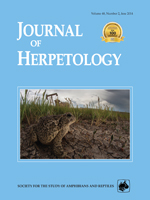Foraging modes were described originally for insectivorous lizards, but many species are omnivorous or herbivorous. Because seeking and consuming plants might alter foraging, we studied foraging by the omnivorous Podarcis lilfordi at two sites: one where lizards licked nectar from flowers of Euphorbia paralias and the other where they sought insects. Movements per minute (MPM) did not differ among groups. Proportion of time spent moving (PTM) was similar in lizards that licked flowers and those that did not. Average speed (AS) was slower, and speed while moving (MS) was faster when foraging for nectar than for insects. Lizards foraging for nectar did not eat insects; those foraging for insects frequently ate them. For lizards foraging for prey, MPM increased as PTM, AS, and capture attempts increased and as PTM decreased. PTM increased as AS and capture attempts increased and decreased as MS increased. AS increased as MS increased. For lizards that licked, proportion of time licking (PTL) was unrelated to MPM, PTM, or AS but increased marginally as MS increased. Lizards foraging for nectar retained the PTM of lizards foraging for prey, but added a large PTL. The ancestral active foraging mode has been retained for hunting insects but modified to search for and lick nectar. While foraging for nectar, lizards greatly reduce attacks on insects, suggesting that, at a given time, an individual forages exclusively for nectar or prey. Reduced predation pressure on islands may have freed lizards to expand the diet by reducing risk during intervals exposed to view while climbing plants and licking nectar.
How to translate text using browser tools
1 June 2014
Foraging by the Omnivorous Lizard Podarcis lilfordi: Effects of Nectivory in an Ancestrally Insectivorous Active Forager
William E. Cooper,
Valentín Pérez-Mellado,
Dror Hawlena
ACCESS THE FULL ARTICLE

Journal of Herpetology
Vol. 48 • No. 2
June 2014
Vol. 48 • No. 2
June 2014




